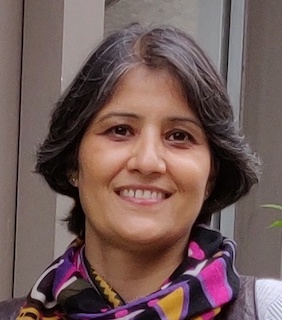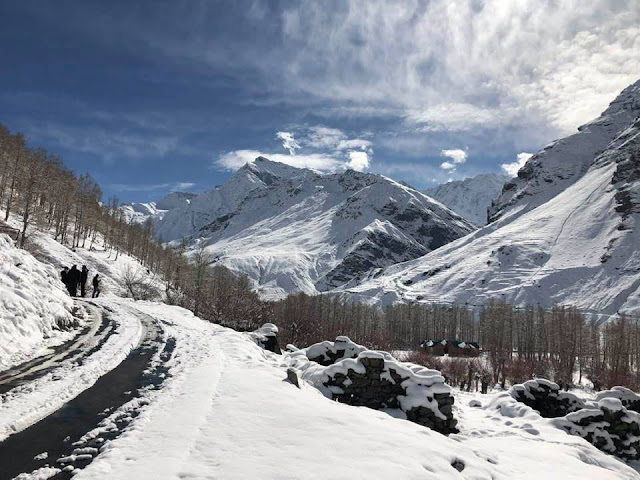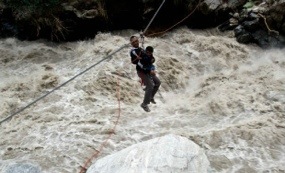In the midst of raging debate, I thought it would be a good exercise to figure out what have the governments been doing all these years about preparing the state for dealing with the adverse impacts of climate change, extreme weather conditions and natural calamities. What has been done for disaster management, how does it actually work on the ground and how well equipped is the state machinery to deal with the consequences of such disasters; are we climate proofing our infrastructure, are we adapting our development path to suit the climate changes that are predicted for the future in the state?
Opinions, some of them bordering on rhetoric, on what went wrong and what should be done going forward are flying thick and fast. My experience for the past more than two decades has taught me that we, as a system, are very good with making policies and laws, strategic plans and vision documents. I believed that Himachal Pradesh could not have a dearth of regulatory framework though could be without commensurate institutional framework for dealing with any of the issues that the state is faced with – be it sustainable development, adverse impacts of climate change, adaptation, mitigation , vulnerability studies of the state to the village level etc.
Most of us believe the Intergovernmental Panel on Climate Change, Assessment Report 6 (IPCC AR6) that global warming will continue to increase in the near term (2021-2040) mainly due to increased cumulative CO2 emissions in nearly all considered scenarios and modelled pathways. We are witnessing that the Western Himalayan Region (WHR), of which Himachal Pradesh is a part of, has been a hotspot of several hazards like cloudbursts, Glacial Lake Outburst Flood (GLOF), convective storms and forest fires in the recent past. It is widely acknowledged that the WHR may face higher magnitude of heavy and extreme rainfall because of its accelerated warming.
Let’s take a deep dive, actually not even deep (this information has been gathered from the website of DEST& CC) and see what our governments have done these past couple of decades since UNFCCC and IPCC have been raising multiple alarms or since at least when the GOI launched its ambitious National Action Plan on Climate Change (NAPCC) in 2008.
We are starting on a wrong foot because unfortunately the state does not have its own Environment Policy, instead we have Environment Policy Guidelines (EPG). The EPG states that the developmental vis-a-vis environmental model followed in the State is generally directed by central policies and laws which do not fully address the requirements and unique aspects of mountain areas. The main purpose of EPG is to develop approaches compatible with the mountain eco-systems and its unique aspects such as fragility, inaccessibility, marginality, diversity, climatic peculiarities, etc. According to EPG these characteristics and special features of the state guided the identification of issues of environmental concern in the state, the ones which need priority attention and those issues are;
- Construction of highways, massive buildings and big dams
- Extension of orchards into environmentally sensitive agricultural and forest lands.
- Destruction of forest cover.
- Deep Channel cutting for minerals and open cast mining for building materials.
- Pollution and garbage.
Unfortunately as per this document the state does not feel that higher vulnerability to adverse impacts of climate change in the mountains – therefore climate proofing of its development, projected extreme weather conditions, fragile topography, climatology and geology – also need priority attention but nonetheless an exercise was undertaken. The state government is aware that environmental issues need priority attention.
There is an Environmental Status Report (ESR) on the basis of which EPG mentioned above, has identified sectoral guideline, identified issues in different sectors and have also identified actions that need to be taken. There are many gaps in both, identifying the areas of concern and also within the identified area the issues that need attention. However it can be safely said that the government has its heart in the right place.
HP has a council for science, technology and environment (HIMCOSTE) and also State Centre on Climate Change. HP has a State Knowledge Cell on Climate Change (HPKCCC) which was set up under National Mission for Sustaining the Himalayan Ecosystem (NMSHE) in the Department of Environment, Science & Technology and Climate Change (DEST&CC).
State also has an Environment Master Plan (EMP) formulated in 2013 in order to ensure the sustainability of environmental heritage and natural resources and to develop a long term perspective of achieving environmentally sustainable development. This document runs in to thousands of pages. Executive summary itself runs in to 89 pages. The sectoral baseline data/information has been based on Census of India, 2001 with relevant and available updates from Census of India, 2011 (Statistical Handbooks of Directorate of Economics and Statistics, Government of Himachal Pradesh, statistic obtained by line departments, State Agriculture Plan, District Agriculture Plan, State of Environment Report, State Biodiversity Strategy and Action Plan. Source of data have been provided in each sectoral reports.) As per EMP vulnerability assessment has been done both sectorally and geographically. Village level climatic vulnerability assessment and indicative adaptation plan framework has also been done for river Beas basin in Kullu and Mandi district, arguably the worst hit in the recent floods. The unit for assessment of geographical vulnerability is tehsil and district, the scenarios have been prepared for year 2011, 2021, 2031 and 2041. Sectoral vulnerability has been assessed at tehsil level with respect to water, air, land, natural critical habitats, climate change, hazard susceptibility, spatial areas of conflict, quality of life (health) and quality of life (education).
I am sure the state can undertake an exercise to see whether its vulnerability report and indicative adaptation framework plan whatever it was, is in sync with what actually happened here, now, in 2023.I did not find any of these documents user friendly or any information contained in them easily understandable.
HP has created an environment Fund in 2008 under the now DEST & Climate Change .The State through DEST & CC has also prepared a comprehensive “State Strategy & Action Plan on Climate Change (SAPCC)”. Under this Action Plan, block level climate change vulnerability assessment has been undertaken. So the state seems to have information about vulnerability status of the entire state up to block and village level.
The state has Aryabhatta Geo-informatics and Space Application Centre (AGiSAC) which was set up in 2011. The centre is a technical hub that is supposed to serve as a repository for all data on the state’s environment, as well as its natural and man-made resources, and climate change. It helps government departments make evidence-based development decisions and to monitor results. The state has a Hydro Power Policy,2006, has Payment for Ecosystem Services Policy, Sustainable Tourism Development Policy 2013, Integrated Master Plan for Sustainable Tourism etc. All these policies and initiatives are not an exhaustive list of what the government has been doing. There could be many other relevant initiatives and policies that I have not been able to find out about so far. HP also has a State Strategy and Action Plan on climate change which was put together in 2012 and State Action Plan on Climate Change 2021-30.
Apart from what the state government has done several of GOI’s initiatives also enable the state to better prepare itself to meet the exigencies of climate change and pursue a apth of sustainable development. GOI has set up National Adaptation Fund on Climate Change (NAFCC). The objective of the fund is to assist State and Union Territories that are particularly vulnerable to the adverse effects of climate change in meeting the cost of adaptation. There is clean technology fund (CTF) from where HP has been taking development policy loans apart from the WB.
In “HP Towards Green and Inclusive Development Report”, a World Bank report (undated), it is stated that HP is seeking to develop in an environmentally and socially sustainable manner. Towards this end, it is devising suitable policies for its key revenue earning sectors – hydropower, tourism, and industry- as well as for rural development, as the vast majority of the state’s people live in rural areas and depend on natural resources for their livelihoods. This document states that HP has moved away from the conventional method of assessing impacts on a project-by project basis and adopted a river basin approach to impact assessment. These Cumulative Environmental Impact Assessments (CEIA) are a big step forward in managing the combined impacts of a number of hydropower projects on a river basin. This document also claims that Himachal Pradesh has also appointed an independent panel of two experts from the environment and social sectors to advise the state on all aspects of hydropower development to ensure that future growth in the sector takes place sustainably.
Another very heartening development is the state’s understanding that since a river basin is one natural, ecological unit, any degradation in the upper reaches can have major impacts downstream. The state is therefore formulating Integrated Catchment Area Treatment (CAT) plans to enable planners to stabilize entire catchments and avoid fragmented prescriptions. Himachal Pradesh has therefore mandated that all hydropower projects of 10 MW and above set aside 2.5 percent of project costs to implement CAT plans in the river basins in which they operate. By mid-2015, the state had prepared and finalized integrated CAT plans for the Sutlej and Chenab river basins; erosion levels are high in the Sutlej basin and the river carries one of the largest silt loads in the country. Work on the three other river basins was in progress. HP is the first state in the country to have mandated E-Flow which is 15% of the lean season flow. E-flows from individual hydropower projects are monitored by the state’s Pollution Control Board and can be publicly seen on the web on a real-time basis, enabling the people to monitor compliance. HP is the first state in India to adopt a unique benefit-sharing practice that shares project earnings with local people. Revenues generated from the sale of 1 percent of additional free power provided by the developers to the state are to be distributed annually among the long-term residents of a project affected area throughout a project’s life. Another innovation is that during the project’s construction phase, hydropower developers are required to contribute 1.5 percent of project costs to the Local Area Development Fund, 2009 (LADF) to finance infrastructure development in the project area.
The point I am trying to make is that the governments understand everything. They have a vast set of data, information, knowledge of which they are not making any use on the ground. I understand that despite so much to show on paper there is still unavailability of adequate data of requisite quality and also quantity related to how climate change is impacting and likely to impact the specific areas in the state and whatever incomplete information is available is also not accessible in concise form at one place despite institutional framework on paper available in this regard. A sincere, consistent, comprehensive endeavour has to be made for better understanding of the processes influencing the climate of Himalayas. We need to do what we purport we are doing with utmost diligence and there should not be any gap between what we say we will do and what we do on the ground.
We need to start a meaningful and a participative debate as to whether the policy and vision for development of the state is in sync with what is being predicted in future for the state in terms of adverse impacts of climate change including on occurrence of extreme weather conditions, quantity and distribution of precipitation and snowfall, availability of fresh water, impact on biodiversity etc. Are we listening to the overwhelming scientific advice about what can and cannot be done in the mountains in the name of development?
We need to work together with our leadership from across the party lines and convince them in the light of more than adequate scientific evidence that mountains can’t develop like the rest. We cannot leave our future in the hands of leaders whose vision extend only up to the next elections. If we make politicians of all hues in the state sit together and ponder over the issues together and find solutions together we can stop these things becoming an election issue and stop them from trading charges with each other.
Sustainable development – howsoever cliched and abused this phrase sounds – is the need of the hour and without political will we cannot move forward and we know that from the fate of UNFCCC. The biggest hurdle in front of all us is to generate that political will and only people of the state can achieve that if they strive together.

Archana Vaidya is a Natural Resource Management and Environment Law Consultant. An advocate practicing at the High Court of Himachal Pradesh, she is an Oxford Gurukul Chevening Fellow and a founding partner of IELO, a law firm. She has co-authored books and writes on issues related to natural resource management and environment law. She divides her time between Delhi and Bajaura, Kullu.



